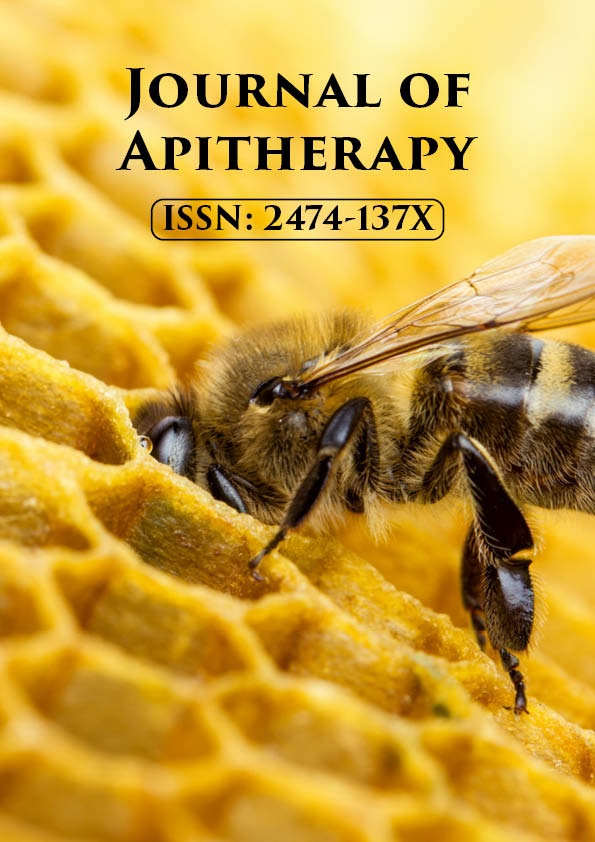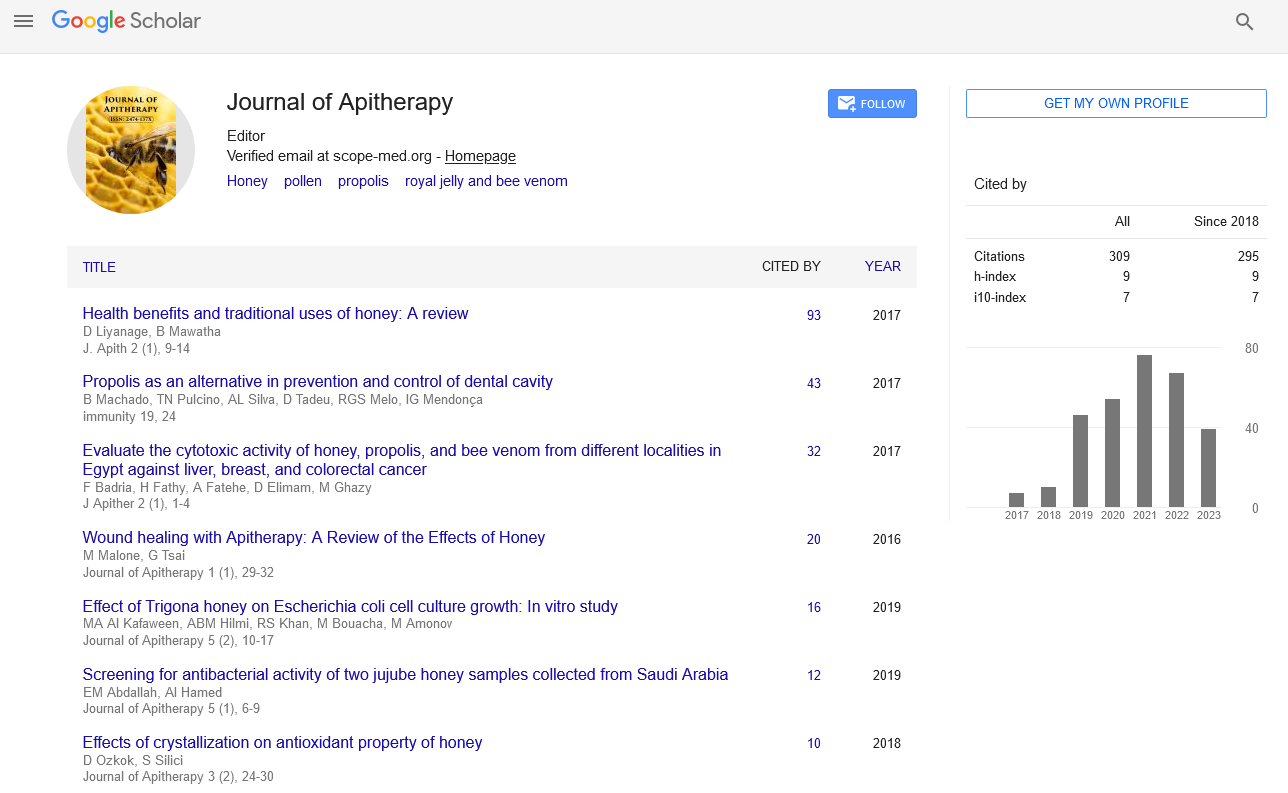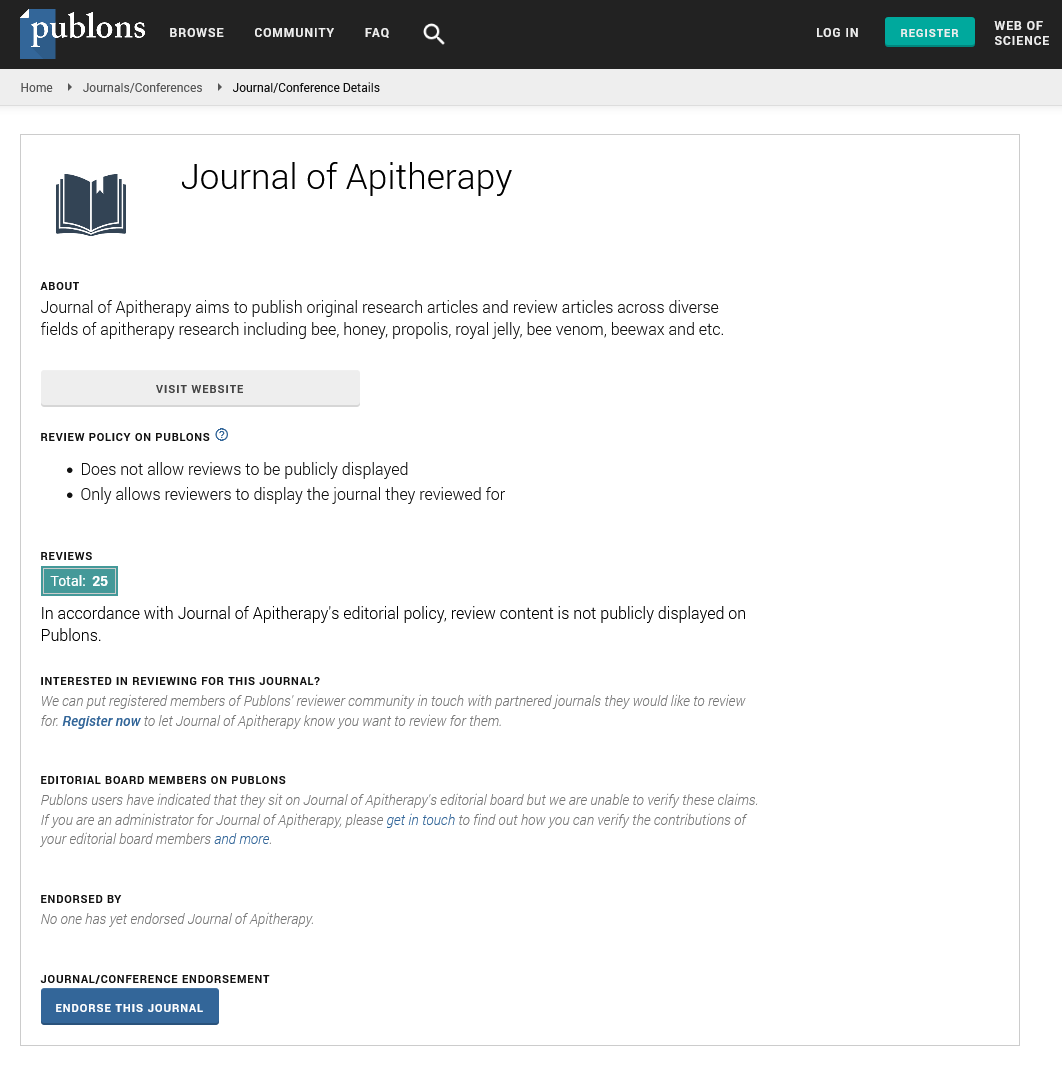Editorial - Journal of Apitherapy (2021)
Royal Jelly and its - Related Pathologies
Gerald TanPublished: 01-Jun-2021
Menopause represents a transitional phase into a woman’s life, during which a wide range of changes in metabolism, physiology, mental, and physical well-being occur. Menopausal symptoms usually have a significant negative impact on the overall quality of life and become a psychosocial impairment. The majority of these symptoms are a consequence of estrogen withdrawal or a prolonged estrogen deficiency. Post-menopausal women are at increased risk of atherosclerosis, cardiovascular events, diabetes, mood disorders such as anxiety and depression, vasomotor symptoms (hot flushes, night sweats) osteoporosis and vaginal atrophy. Conventionally, these problems are treated with hormonal replacement therapy but the risk of undesirable adverse effects such as breast cancer, abnormal uterine bleeding or breast tenderness sometimes outweighs the benefits, which is why more natural alternatives tend to be used. Natural therapies for menopausal-related symptoms and complaints include phytoestrogens, which are natural molecules similar to human estrogens, considered to prevent postmenopausal symptoms. Soybeans and red clover are the most well-known natural alternatives to conventional hormone replacement therapy, but their efficiency is still highly debated.
Apitherapy is a type of alternative medicine that uses natural products from honeybees, such as honey, propolis, royal jelly, bee bread, and bee venom, whose healing properties are described by centuries .These products also demonstrated their usefulness for the treatment of postmenopausal complaints. Royal jelly, known as “superfood”, is a creamy substance secreted by the mandibular and hypopharyngeal glands of nurse bees, used to feed the queen bees throughout their lifetime and worker bees during the stage of larvae [8]. The consumption of this magical liquid by the queen bees generate many advantages such as their size, which is double in comparison to worker bees, a longer lifespan and a better function of their reproductive system . In the last years, the production of royal jelly in China considerably increased because beekeepers developed a genetic selection of high-producing royal jelly Italian bees . China became the largest producer of royal jelly, and nowadays it possesses almost 90% of all world production. Annually, more than 4000 tons of royal jelly are produced and exported from China to the United States or Europe
Royal jelly contains a wide amount of amino acids, especially essential amino acids. The most expressed free amino acid from royal jelly is lysine (62.43 mg/100 g). This is followed by various quantities of cysteine, proline, and aspartic acid. Recent research showed that longˇterm dietary supplementation of leucine, isoleucine and valine extracted from royal jelly, enhances the expression of sirtuin 1, mitochondrial biogenesis and reduces the production of reactive oxygen species (ROS) in the skeletal muscles and myocardium. In these conditions, royal jelly administration as a dietary supplement can alleviate age-related muscle dysfunctions The flavonoids described in royal jelly can be divided into the following five categories: isoflavonoids (genistein and formononetin), flavones (apigenin, chrysin and luteolin), flavonols (kaempherol), flavonones (hesperetin, naringerin, isosakuranetin) and isoflavonoids (genistein, formononetin). The phenolic content of royal jelly is based on organic acids such as octanoic or dodecanoic acid and pinobanksin illustrates a schematical representation of the royal jelly composition and the main functional activities of its compounds.







